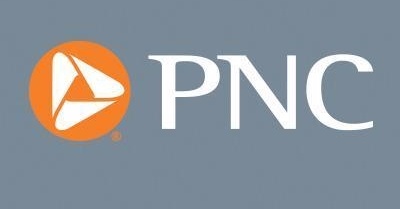
Still Up 8.5% year-over-year
- Consumer Prices (CPI) declined slightly in July 2022, down 0.01% month-over-month on falling energy prices
- Core CPI, excluding food and energy prices, posted a 5.9% year-over-year gain in July 2022 (seasonally adjusted), matching the June 2022 result
- Energy prices fell sharply, down 4.6% in July 2022 versus June, Gasoline prices down 7.7% for the month
- Food & Beverages continued to lead inflationary pressures on households, rising 1.1% for July 2022 over the prior month
The Consumer Price Index (CPI) was up by 8.5% year-over-year (non-seasonally adjusted) in July 2022, actually falling by 0.01% versus June. Growth in the topline figure was tempered by a dramatic decline in Energy prices, led by falling Gasoline prices which were down by 7.7% month-over-month. Core CPI, which excludes volatile food and energy prices and which more closely mirrors the Federal Reserve’s guiding metric for monetary policy, rose 0.3% for the month in July and remained up by 5.9% versus one year ago. Housing-related prices, as well as Food & Beverages, remained a source of financial stress for U.S. households, with both categories continuing their strong pace of gains.
Core CPI aligns with the Federal Reserve’s preferred policy-setting metric (the Core measure of the PCE Deflator) in that it excludes food and energy prices which are generally beyond the Fed’s monetary policy control. At a 5.9% year-over-year gain, July 2022’s Core CPI growth matched its June result, but on a month-over-month basis, the measure slowed to a 0.3% gain – down from 0.7% in June. Slowing monthly gains in CPI inflation will be the barometer by which the Fed’s fight against inflation is gauged.
Even if CPI growth posted a similar 0.3% monthly gain throughout the rest of the year, inflation would remain at 7.9% in year-over-year terms by December 2022. But after the price spikes resulting from supply chain disruptions and pent-up demand being satisfied over the past year, a continuation of that more modest pace of gains would yield a year-over-year inflation number closer to 3.5% by mid-2023, when PNC forecasts that the Fed will be in a near-term steady state with monetary policy rates. The expectation will be that “Demand Destruction” and business risk aversion in response will be able to keep inflation from reigniting while the U.S. economy rebalances in the wake of higher prices and a tight labor market.
New Vehicle prices continued to rise at a brisk pace in July 2022, up by 0.6% for the month and 10.4% versus one year ago. Used Vehicle prices, however, fell slightly in July 2022 (-0.4%) after two strong months of gains in May and June. High prices across the U.S. economy are hitting lower-income households hardest, and declining demand – and weaker pricing power – for used vehicles is not surprising as this space is where such households might be expected to be shopping for transportation versus their higher-income counterparts.
Gasoline prices did fall throughout the month of July and have thus far continued to do so in August. This is one major expense for all households that will help ease the stress on household budgets through the second half of 2022. Overall vehicle demand may take time to rebound, however, as large purchases are more likely to be delayed while households stabilize their balance sheets in the wake of the past year’s wave of inflation.
Consumer prices for Housing were up by 7.4% year-over-year in July 2022 on a seasonally adjusted basis. Although this is slightly stronger than the June 2022 result, again the monthly gain was modestly slower in July 2022 (+0.4%) than in June (+0.8%). The annualized pace of home sales fell consistently throughout the first half of 2022, partly in response to higher mortgage rates but also as would-be homebuyers perhaps reassessed their savings in the face of higher everyday costs due to inflation’s impact throughout the past year. With not only house prices rising, but also the cost of household goods & services, homebuying demand should continue to slow in the second half of this year even as mortgage rates back down from their recent highs above 5.5%.
The Federal Reserve should not be displeased with the July 2022 CPI inflation report. Although prices continue to rise for everyday necessities, the pace of gains for such items slowed, and energy costs fell back sharply for the month which should flow through to weaker price pressure on other consumer goods and services in the months to come. PNC still expects a 50 basis point rise from the Fed out of their September 2022 meeting, and this month’s inflation results reinforce that expectation. The fight against inflation is not over, but July’s results suggest that steps in the right direction are being taken.
The PNC Financial Services Group, Inc. is one of the largest diversified financial services institutions in the United States, organized around its customers and communities for strong relationships and local delivery of retail and business banking including a full range of lending products; specialized services for corporations and government entities, including corporate banking, real estate finance and asset-based lending; wealth management and asset management. For information about PNC, visit www.pnc.com.













